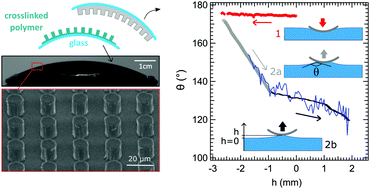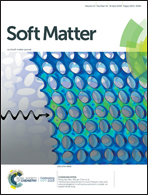Capillary bridge technique to study superhydrophobic surfaces
Abstract
We present here the use of the capillary bridge technique to study the wetting properties (advancing and receding contact angles) of transparent, textured and superhydrophobic surfaces over large wetted area. Apparent contact angles on such surfaces are classically measured using a goniometer in combination with video camera side visualization and a drop shape analysis. Recent experiments of Schellenberger et al. [F. Schellenberger, N. Encinas, D. Vollmer and H. J. Butt, Phys. Rev. Lett., 2016, 116(9), 096101] show that this method can significantly underestimate the apparent advancing contact angle. We use for the first time the capillary bridge setup for such textured surfaces, leading to a large (up to several cm2) wetted area, instead of having a reduced contact zone as in the drop case (mm2 or less). (1) We show here how to use the method and its characteristics to explore the wetting properties of superhydrophobic surfaces. We have developed a new analysis method in order to obtain the value of the contact angle for any position of the substrate. (2) We compare with the classical drop side view method, showing that advancing contact angles are systematically higher. (3) We compare to a few existing models, concluding a good agreement for receding values but not for advancing angles, for which models must be refined.



 Please wait while we load your content...
Please wait while we load your content...